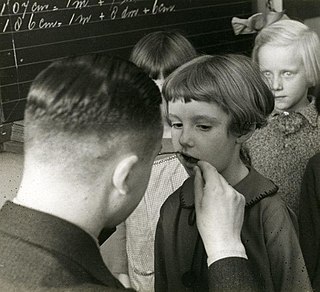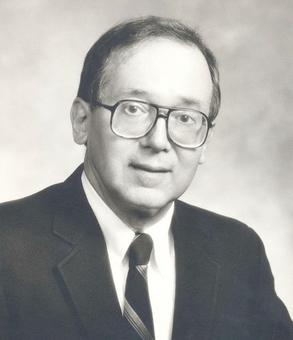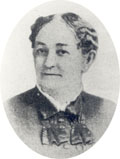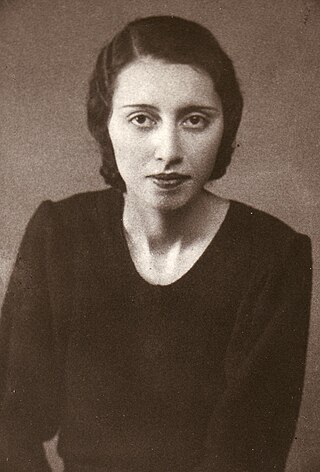
Dentistry, also known as dental medicine and oral medicine, is the branch of medicine focused on the teeth, gums, and mouth. It consists of the study, diagnosis, prevention, management, and treatment of diseases, disorders, and conditions of the mouth, most commonly focused on dentition as well as the oral mucosa. Dentistry may also encompass other aspects of the craniofacial complex including the temporomandibular joint. The practitioner is called a dentist.

A dental drill or handpiece is a hand-held, mechanical instrument used to perform a variety of common dental procedures, including removing decay, polishing fillings, performing cosmetic dentistry, and altering prostheses. The handpiece itself consists of internal mechanical components which initiate a rotational force and provide power to the cutting instrument, usually a dental burr. The type of apparatus used clinically will vary depending on the required function dictated by the dental procedure. It is common for a light source and cooling water-spray system to also be incorporated into certain handpieces; this improves visibility, accuracy and overall success of the procedure. The burrs are usually made of tungsten carbide or diamond.

Greene Vardiman Black (1836–1915) was one of the founders of modern dentistry in the United States. He is also known as the father of operative dentistry.
Adhesive dentistry is a branch of dentistry which deals with adhesion or bonding to the natural substance of teeth, enamel and dentin. It studies the nature and strength of adhesion to dental hard tissues, properties of adhesive materials, causes and mechanisms of failure of the bonds, clinical techniques for bonding and newer applications for bonding such as bonding to the soft tissue. There is also direct composite bonding which uses tooth-colored direct dental composites to repair various tooth damages such as cracks or gaps.
Gingivectomy is a dental procedure in which a dentist or oral surgeon cuts away part of the gums in the mouth.
The American Dental Education Association (ADEA) is a non-profit organization that works to further the education of dental professionals and the advancement of academic dental programs in Canada and the United States. Founded in 1923 as the American Association of Dental Schools, ADEA is based in Washington, D.C.

Pediatric dentistry is the branch of dentistry dealing with children from birth through adolescence. The specialty of pediatric dentistry is recognized by the American Dental Association, Royal College of Dentists of Canada, and Royal Australasian College of Dental Surgeons.

The Creighton University School of Dentistry is the dental school of Creighton University. It is located in the city of Omaha, Nebraska. It was one of the first dental schools in the United States, having been established in 1905.

Metabutoxycaine, marketed under the trade name Primacaine, is a local anesthetic. It is used in dentistry.

John Miller Hyson, Jr. was the former curator, director of curatorial services, and director of archives and history at the National Museum of Dentistry, an affiliate of the Smithsonian Institution located in Baltimore, Maryland. He was also the author of many articles and books on the history of dentistry and was a practicing dentist for nearly 50 years.

Nishtar Institute of Dentistry is a dental school and a tertiary care dental and Oral-Maxillofacial trauma/diseases treatment facility located in Multan, Punjab, Pakistan.

Hamdard College of Medicine & Dentistry trains students for the degree of Bachelor of Medicine, Bachelor of Surgery and Bachelor of Dental Surgery. These degrees will be awarded to candidates who successfully complete all requirements set out in the rules and regulations specified by the Pakistan Medical and Dental Council (PMDC). The college is located at the main campus of Hamdard University located in the northern part of Karachi, Pakistan.

There is a long history of women in dentistry in the United States.

There is a long history of women in dentistry. Women are depicted as assistant dentists in the middle ages. Prior to the 19th-century, dentistry was largely not yet a clearly defined and regulated profession with formal educational requirements. Individual female dentists are known from the 18th-century. When the profession was regulated in the 19th-century, it took a while before women achieved the formal education and permission to engage in dentistry.
Sir Nairn Hutchison Fulton Wilson is the Honorary Professor of Dentistry, former Professor of Restorative Dentistry and Dean and Head of King's College London Dental Institute from 2001 until 2012 and Deputy Vice Principal (health) between 2009 and 2012.
Calvin Suveril Case was an American orthodontist who is one of the earliest figures in orthodontics. Case did extensive work with cleft lip and palate and is known for developing the Velum Obturator. Case is also known for his part in the Extraction Debate of 1911 that happened between Edward Angle and Case.
John Nutting Farrar was an American dentist who is considered to be "Father of American Orthodontics". He published several of his works in Dental Cosmos, and they are known to be monumental for the field of Orthodontics at that time. His paper published in 1876 was the first paper ever published about the movement of teeth in the field of dentistry.

Dr. Rafiuddin Ahmed was an Indian dentist, educator and later minister in the West Bengal cabinet, who founded the first dental college of India, Dr. R. Ahmed Dental College and Hospital, later named 'The Calcutta Dental College', where he remained its principal until 1950. He established the Indian Dental Journal in 1925, and played a key role in founding the Bengal Dentist Act in 1939. In 1946, he established The Bengal Dental Association which was then renamed as the Indian Dental Association. The Government of India awarded him the Padma Bhushan in 1964.Remembered as the father of modern dentistry in India, in 2016, the Indian Dental Association declared 24 December as National Dentist's Day in his honour.

Minnie Evangeline Jordon was an American dentist, and the first dentist in the United States to specialize in pediatric dentistry.

Richard C. Vinci is a retired United States Navy rear admiral. He served as the 35th Chief of the United States Navy Dental Corps. He retired in July 2011, after 42 years of naval service. Admiral Vinci is a member of the International College of Dentists, Academy of Operative Dentistry, American Dental Association, American Board of Operative Dentistry, and the American College of Dentists.













